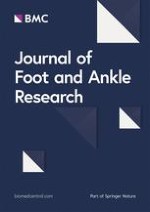Background
JIA is associated with impaired health-related quality of life (HRQoL). Proxy reporting of health outcomes such as HRQoL is often required in the paediatric setting. However there is uncertainty regarding whether self- or proxy- reported HRQoL should be used in health economic analyses, as perceptions of well-being may differ between parent and child. The aim of this study was to estimate levels of agreement and association between self- and proxy-reported HRQoL in JIA.
Methods
The EQ5D is a generic measure of HRQoL commonly used in economic evaluations. It has 2 components; 1) EQ5D profile comprises of 5 domains; mobility, self-care, usual activities, pain, and anxiety (scored as severe, moderate, or no problems); and 2) a 100mm visual-analogue-scale (VAS). EQ5D profiles were used to calculate a weighted utility index (worst health=-0.59, best health=1) based on a tariff derived from a UK population sample. The EQ5D was self- and proxy-completed independently by JIA patient-parent/guardian pairs in the paediatric rheumatology multi-disciplinary foot clinic (n=40). Agreement for the EQ5D profile items was estimated using Cohen’s linear-weighted kappa (κw) (>0.4=moderate agreement) and 95% confidence intervals. Agreement for the utility index and VAS was estimated using the intraclass correlation coefficient (ICC) (≥0.4-0.75=fair to good agreement) with 95% confidence intervals. Consistency was estimated using Kendall’s Tau (τ) and Pearson’s correlation coefficient (r) (≥0.4-0.6=moderate-strong consistency).
Results
Self- versus proxy- agreement was moderate for self-care (κw=0.44) and usual activities (κw=0.44), but less than moderate for mobility (κw=0.29), pain (κw=0.29), and anxiety (κw=0.20). There was good agreement for EQ5D VAS (ICC=0.59), but poor agreement for the utility index (ICC=0.23). The consistency of HRQoL reporting was moderate for self-care (τ=0.47) and usual activities (τ=0.44), but weak for mobility (τ=0.31), pain (τ=0.33), and anxiety (τ=0.23). Consistency was good for EQ5D VAS (r =0.59) but weak for utility index (τ=0.28).
Conclusions
The levels of agreement and association between patients with JIA and parent-proxies are at best moderate for all EQ5D measures. This has important implications for cost-utility analyses using QALYs derived from the EQ5D utility index. Further research is required to determine feasibility of using self- and proxy reported outcomes in cost-effectiveness analyses of podiatric interventions.
This article is published under license to BioMed Central Ltd. This is an open access article distributed under the terms of the Creative Commons Attribution License (
http://creativecommons.org/licenses/by/2.0), which permits unrestricted use, distribution, and reproduction in any medium, provided the original work is properly cited.
